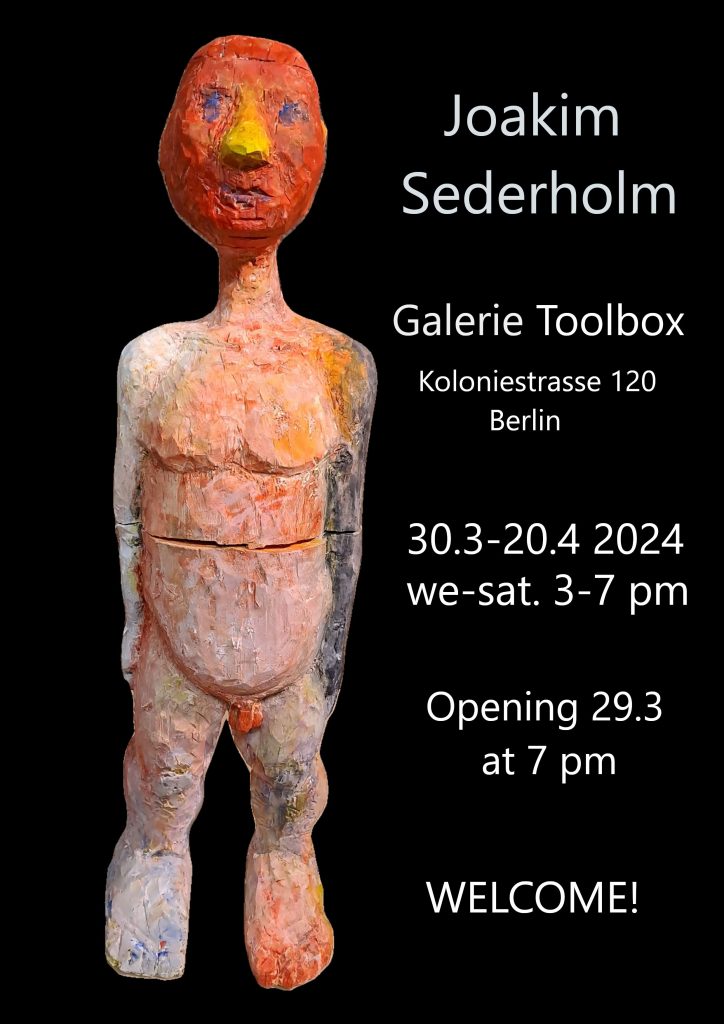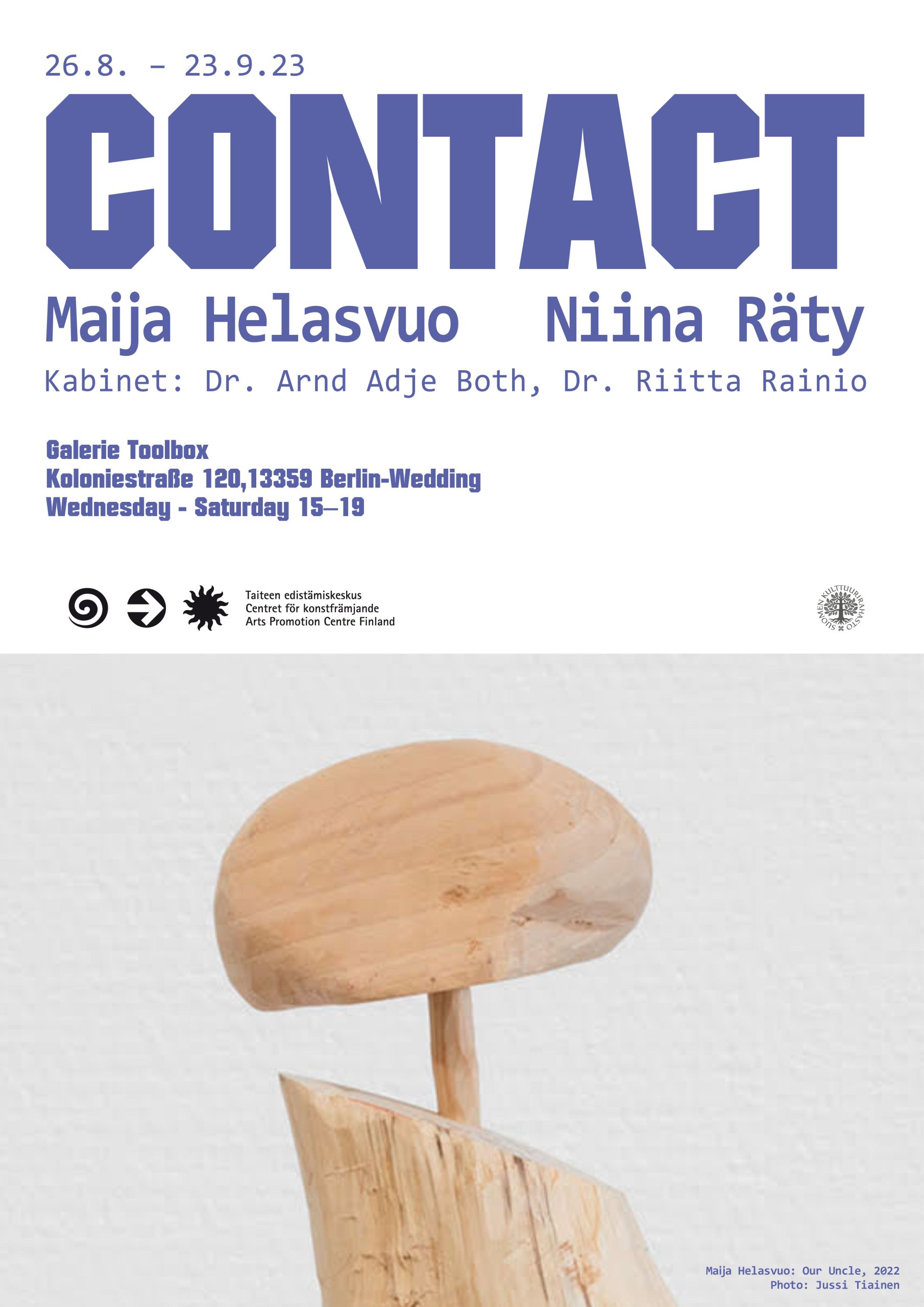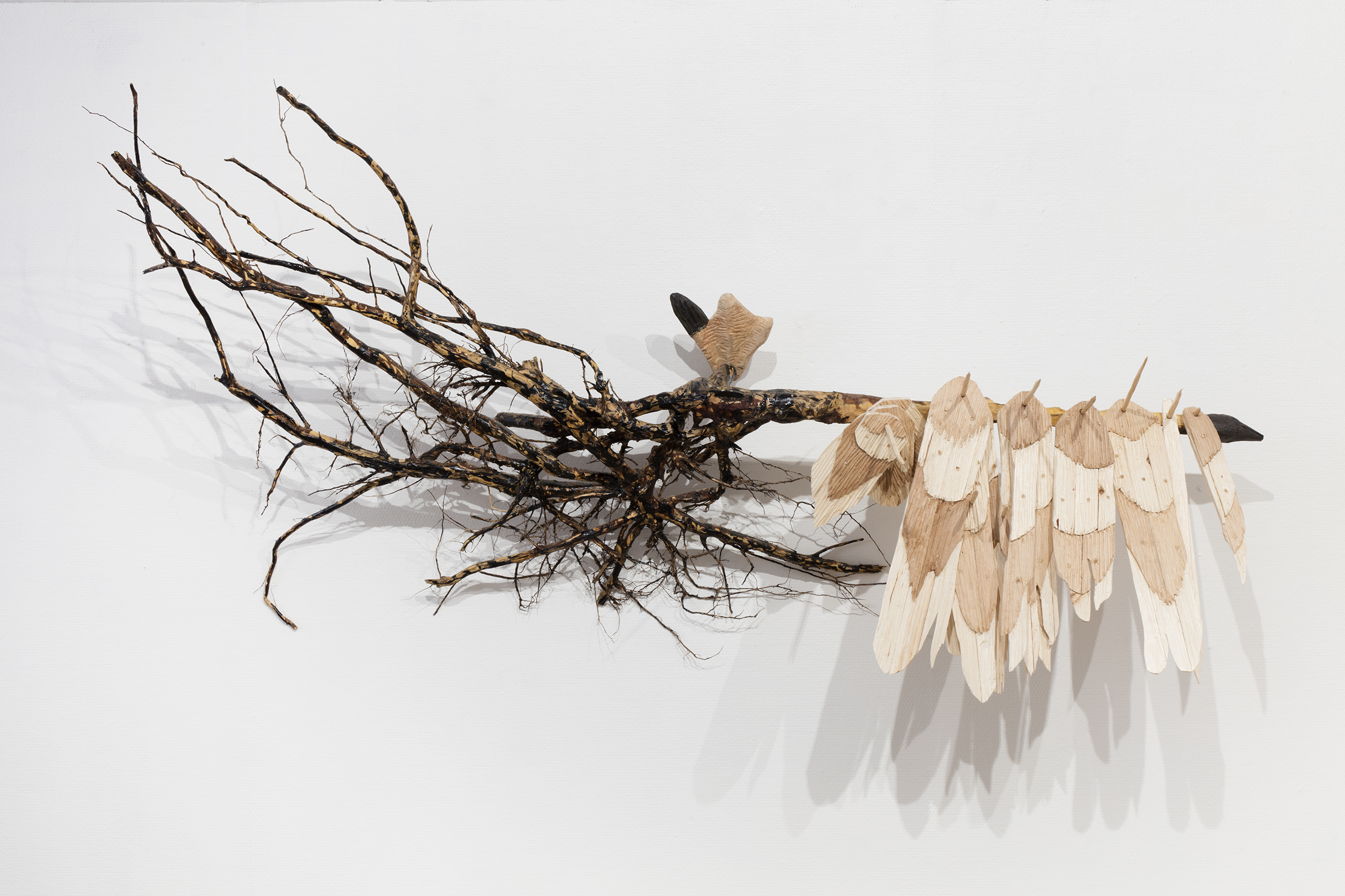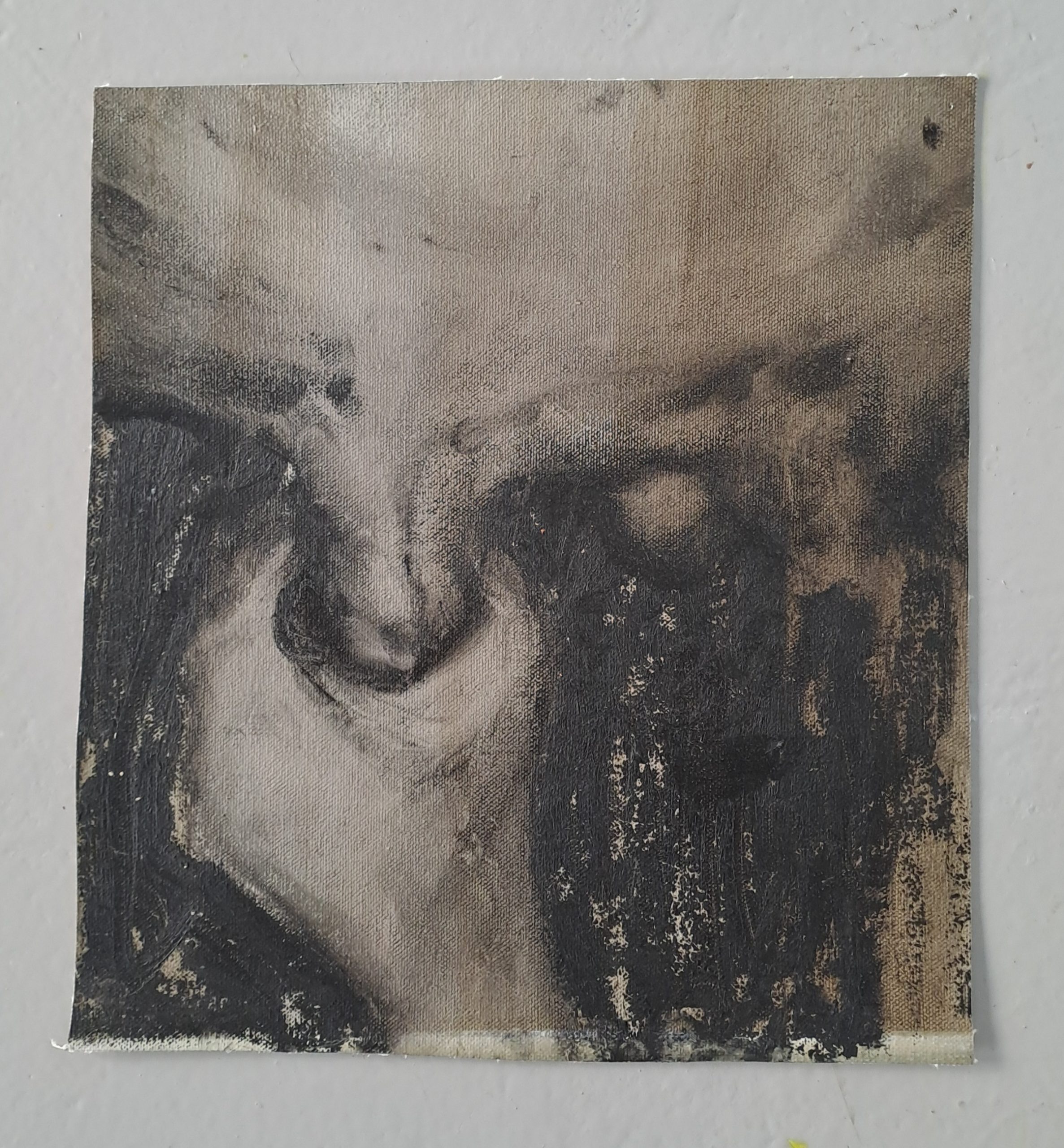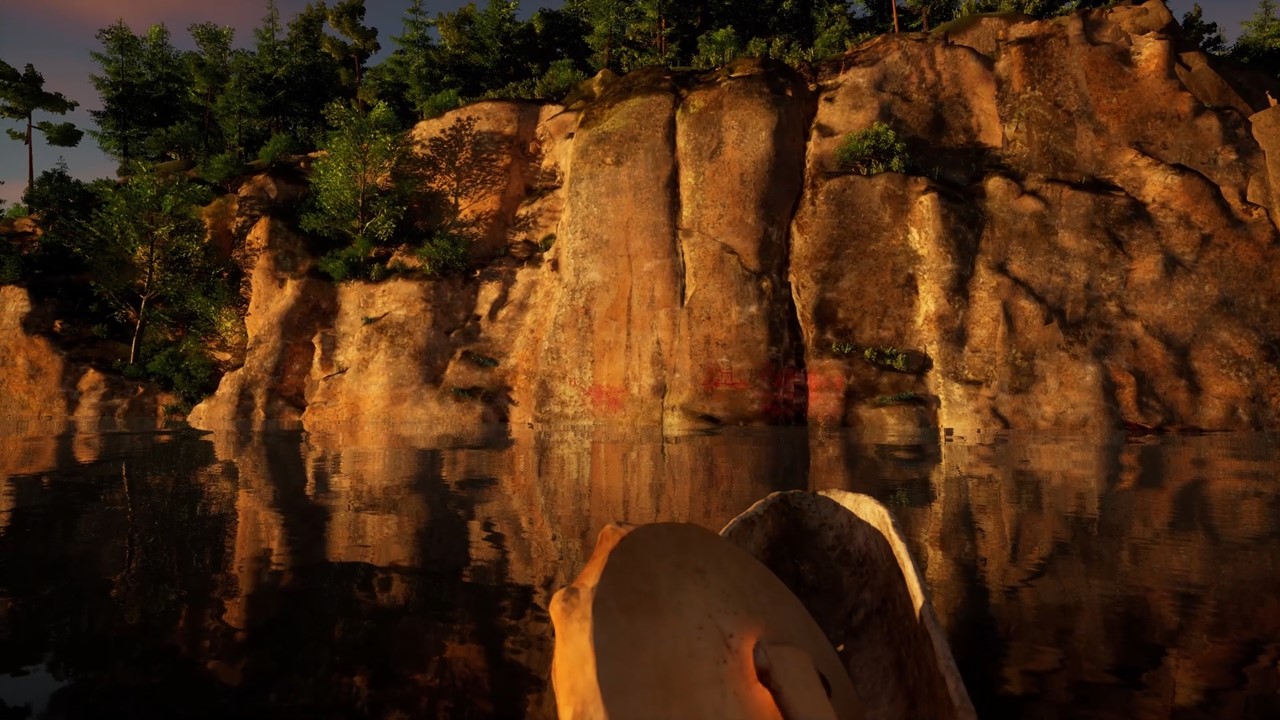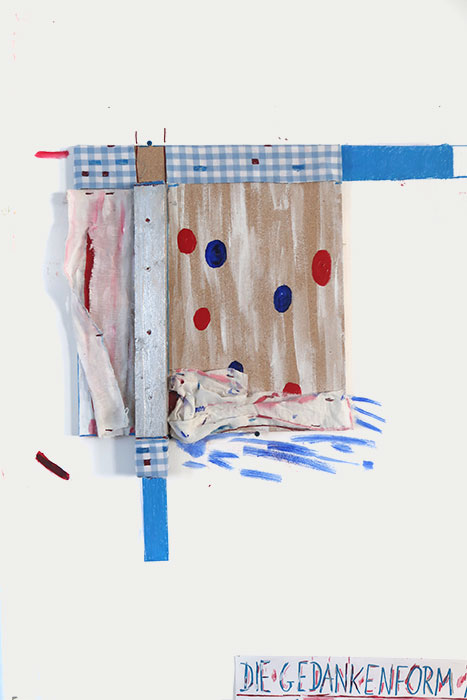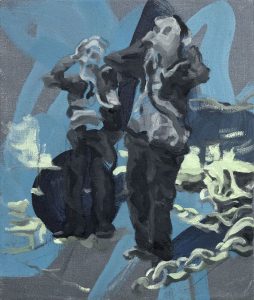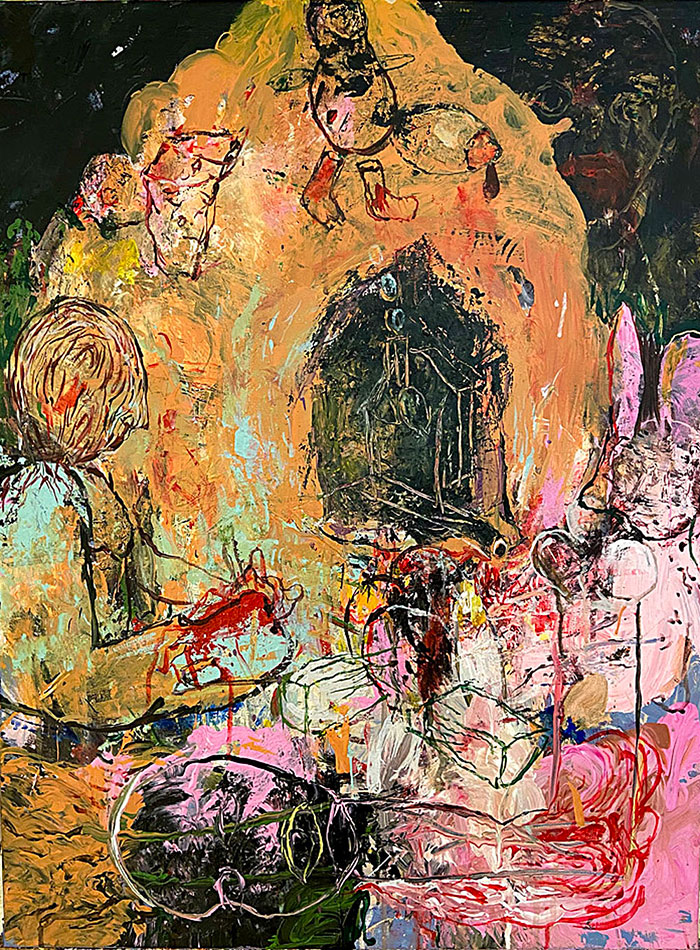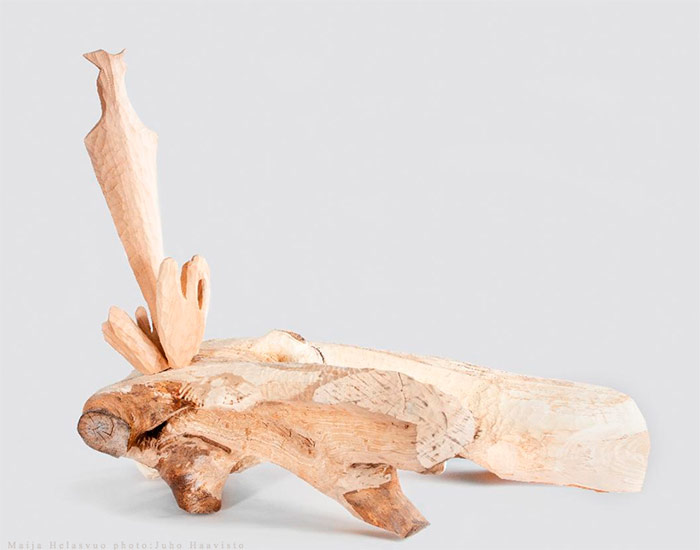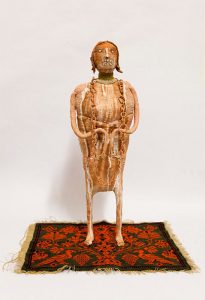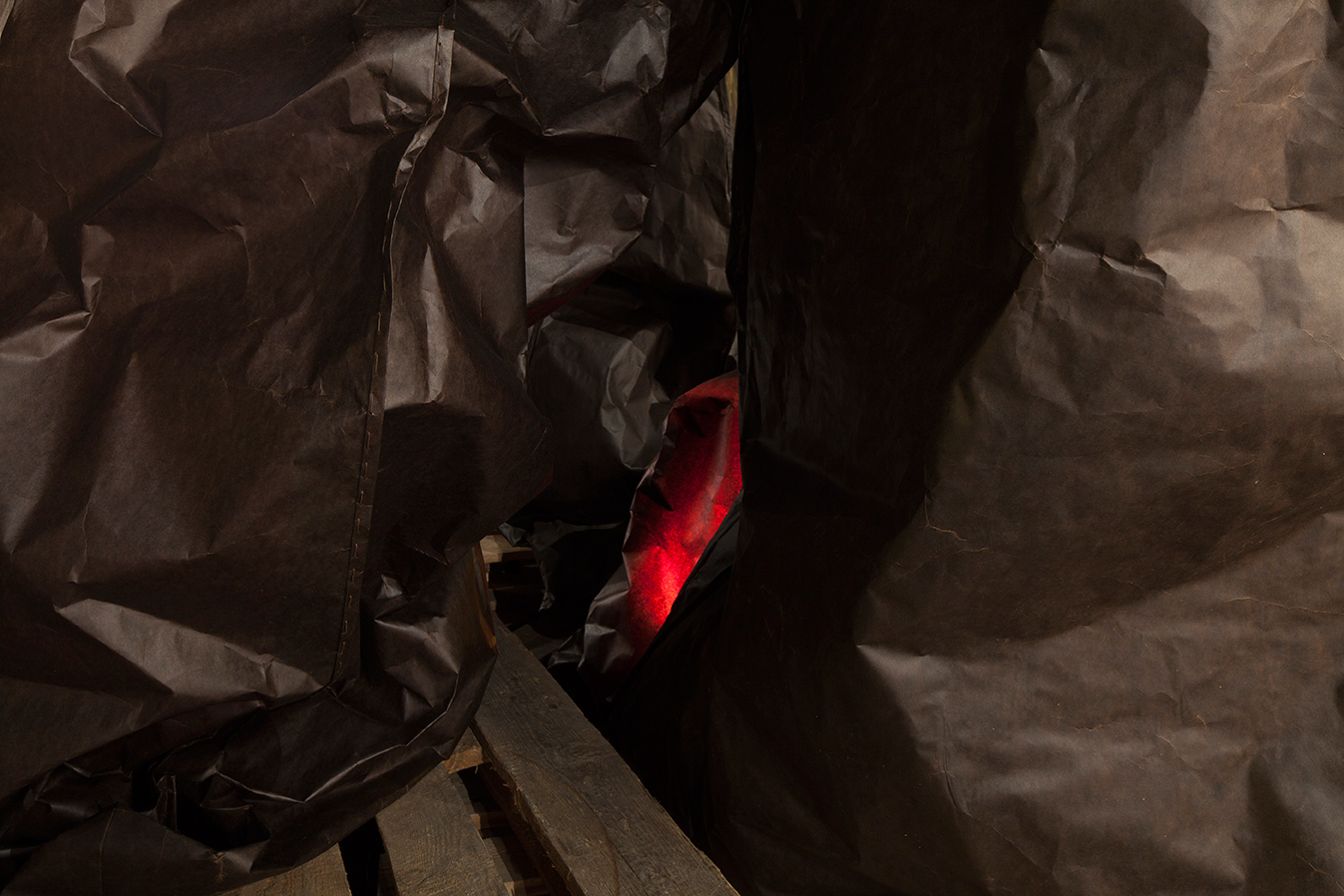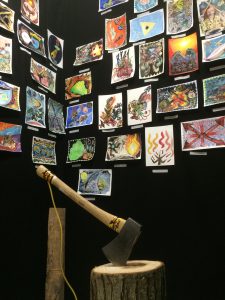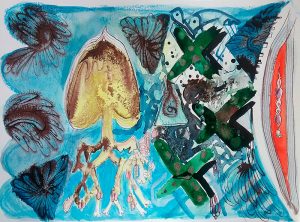Welcome to our opening on Friday, 25. July 2025, 7 pm
Artists:
Peter Hock (Berlin) and Mika Karhu (Finland)
Exhibition: 26.07.–23.08.2025
Opening hours: Mit–Sat 3–7 pm
The Compulsion to Name and Art’s Resistance: On the Difficulty of Viewing Peter Hock’s (b. 1962) charcoal drawings
Art challenges us in a way we are not always willing to admit: it forces us to dwell in uncertainty, discomfort, without the protection of conceptual frameworks. This challenge is vividly embodied in Hock’s art, where the experience of viewing his work becomes a site of tension. The viewer wants to name—but cannot. Hock’s pieces offer no clear categories, no space for simple classification or interpretation. They move along the boundary between the recognizable and the unrecognizable, from one form to another, from the natural to the alien. This refusal of unambiguousness is not an obstacle to understanding, but rather its condition: it is precisely the indeterminacy that opens the possibility for a deeper experience.
Our culture is deeply rooted in the power of naming. By naming things, we define them, organize them, give them a manageable form. Naming brings a sense of safety—it is a human way of keeping chaos at bay. But at the same time, naming can also exclude, reduce, and flatten. When art, like Hock’s work, resists naming, it not only irritates the viewer but also reveals something fundamental about ourselves: our desire to control what we do not understand.
This insight into the double nature of naming—as a source of safety and simultaneously a form of limitation—raises a profound philosophical question: to what extent is understanding based on appropriation, and to what extent on the willingness to remain open to what exceeds language? Naming involves power. When we name, we draw a boundary—on this side lies the known and controlled, on the other the foreign, the undefined, perhaps even the threatening. The unnamed is left without a place in our shared system, and for that reason it unsettles us.
An artwork that refuses to be explained challenges this order. It does not provide a ready-made framework of interpretation but forces the viewer to tolerate ambiguity. This kind of ambiguity cannot be resolved by intellectual effort; instead, it must be inhabited. One must look without understanding—listen without immediately translating what is heard into words. This experience can even be therapeutic, as it dismantles the modern mind’s compulsion for control.
Mika Karhu
The world stutters.
It is full of opposing opinions that contradict the facts of the world. Instead of facts, people talk about values and imagine that values themselves become facts if one just wishes, believes, and wants hard enough.
The world stutters.
It cries out for the help of intellect, but that voice is silenced—into the cavities of silence and stupidity, hidden among cobwebs. The hair follicles of foolishness ooze with the defiance of word-bodies resting on beliefs. Beliefs whose destructive energy and burning pain points are stale clichés about politics, race, economy, art, and sexuality.
Double standards build mental architectures through which people navigate their social world. They shape their actions according to habits of prejudice and routine assumptions. So human—and as Nietzsche said, “there is too much human in man.”
What is hypocrisy, where an individual or group publicly presents certain moral values or principles, yet acts in direct contradiction to them? Why does someone preach strict morality, yet behave immorally themselves—or demand behavior from others that they do not follow in politics, religion, or everyday life?
Why do people set public moral standards but follow them only when it benefits or serves their interests? Why do individuals feel pressure to conform to certain moral norms outwardly, even if they don’t personally believe in them or want to follow them?
Why might a person be unaware of their own contradictory behavior, or try to justify it to themselves through various rationalizations? Why are certain moral values so deeply embedded in communities or cultures that they are maintained externally, even if individuals do not find them personally meaningful?
Why is hypocrisy used as a means to maintain power or control over others, even though such behavior ultimately serves only self-interest?
And why does hypocrisy erode trust and credibility, causing conflict and distrust between individuals and groups?
No wonder the world stutters.
——
Galerie/Projektraum TOOLBOX
Koloniestraße 120
13359 Berlin-Wedding
U-Bahn Osloer Straße
An Feiertagen ist die Toolbox geschlossen
On Bank holidays Toolbox is closed





